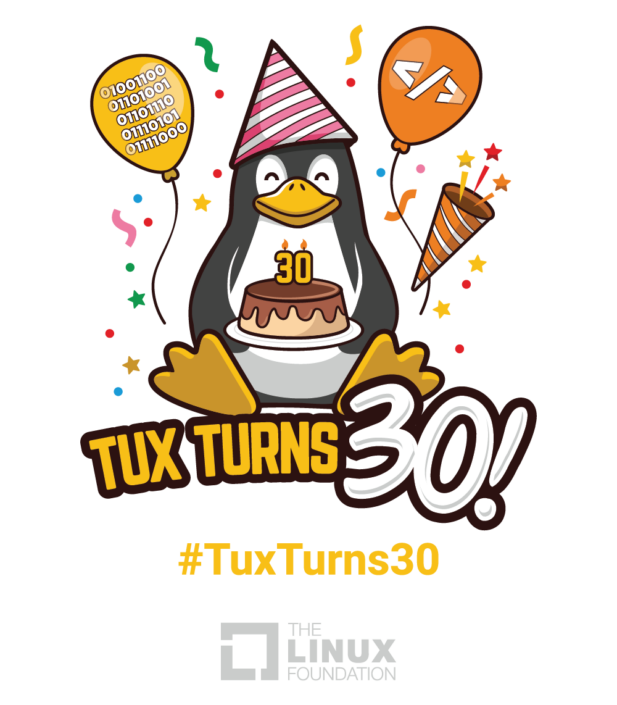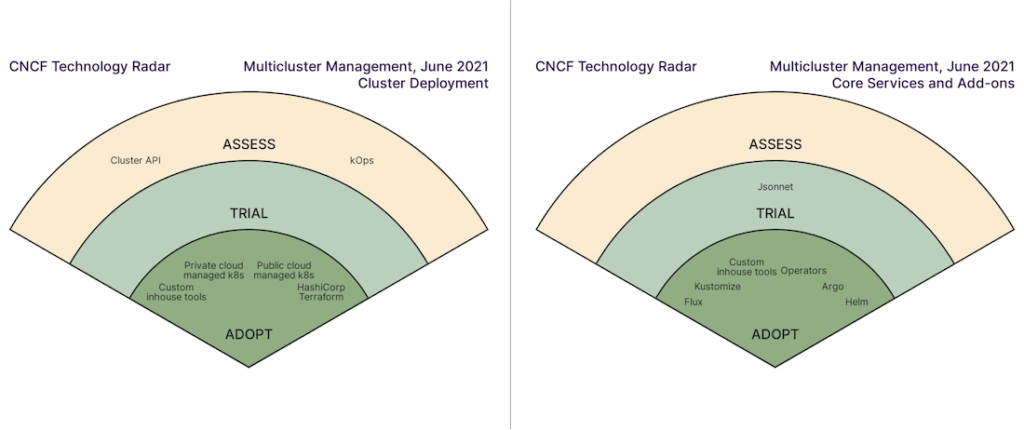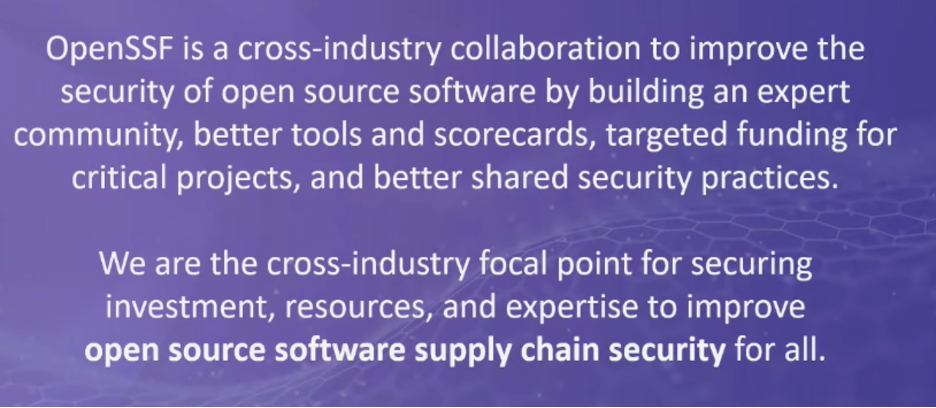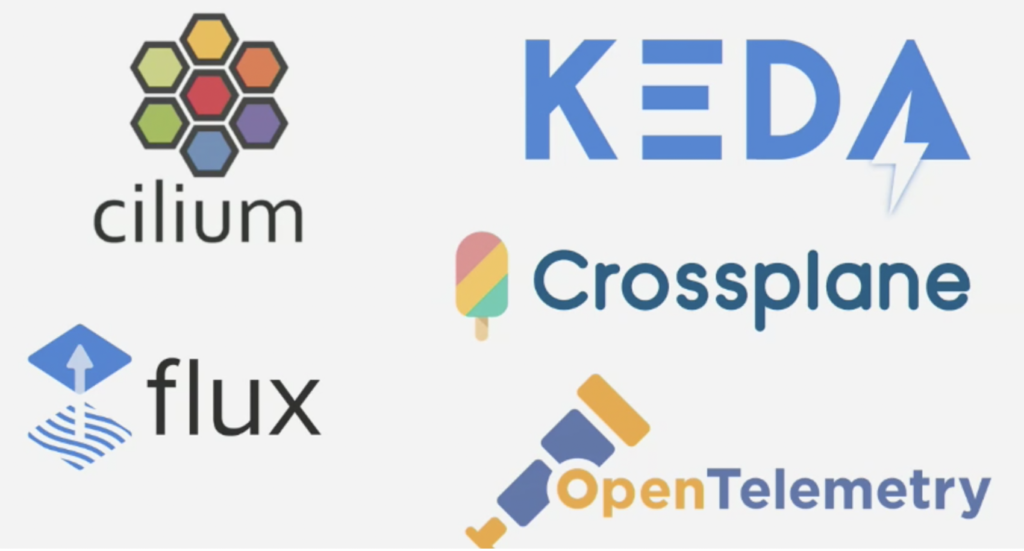CNCF has recently wrapped up a virtual conference (KubeCon + CloudNativeCon North America 2021) with 50+ sessions by engineering experts in Cloud Native technologies. Though this article summarizes key takeaways from the North America hybrid (virtual + in-person) conference (Oct 11-15), it is recommended to watch recorded sessions by clicking here. You can also access slides by clicking here. Key takeaways from CNCF KubeCon + CloudNativeCon NA 2021 conference have been outlined below:
#1 – Growth of Cloud-native community with CNCF

The Cloud Native community under the umbrella of CNCF has been making a consistent growth over the years. Particularly, in the last six months, the growth has been extraordinary such as – 50% growth for projects. The number of contributors and sponsorship by key companies has also been increasing at a steady rate. Also, the end-user community (145+ organizations) helps adoption of Cloud Native technologies to build their products and services.
#2 – Influence of Linux on the evolution of technology landscape

- With mention of Linux turning 30 years this year, it has been appreciated as the underlying technology for many development projects in cloud native space including Kubernetes,
- Linux helps to collaborate openly, support feature development, and foster a sustainable ecosystem. Kubernetes is also closely following Linux development and aligned itself to the ecosystem.
#3 – Cloud Native Maturity Model
- Cartografos working group aims to provide tools to help adopters and end-users to navigate the CNCF landscape and the wider cloud native ecosystem.
- They worked collaboratively to publish The Cloud Native Maturity Model around People, Process, Policy and Technology. Click here to read more about the maturity model.
- CNCF Technical Oversight committee has members from wider industry companies including Amazon, Apple, Google, VMWare, Docker, Rancher, CERN, Alibaba, VMWare, and Spotify.
#4 – Cloud Native End User Technology Radar
- The CNCF End User Technology Radar provides multiple guides for evaluating cloud native technologies.
- Recently, they have published DevSecOps (September 2021) & Multicluster Management (June 2021) technology radars (as shown below).

#5 – Security is of prime focus for Cloud Native technology
- With rise of Software supply chain breaches up to 650%, security has been highlighted as key for Cloud Native technologies.
- Importance of having SBOM was highlighted for an enterprise organization to ensure supply chain security. A Software Bill of Materials (SBOM) is a complete, structured list of components, libraries, and modules required to build a given piece of software and the supply chain relationships between them. CNCF will be working on producing Software Supply Chain Landscape as part of zt.dev initiative.
- CNCF has OpenSSF community, which fills the security gap by using the power of community to handle security issues. By hardening the security of underlying software through tools and processes, it provides the safety to cloud native technologies and increases the overall adoption and trust.

#6 – Kubernetes is the prime focus area for Cloud Native
- Along with multiple innovations happening around Kubernetes, Multicluster Management (MCM) got highlighted as part of KubeCon with following services:
- Gateway APIs/Multicluster Ingress – https://gateway-api.sigs.k8s.io/
- Multicluster Services – Click here to refer to GitHub link.
- Click here to access Kubernetes community calendar to collaborate and connect.
#7 – Project Updates & Key Annoucements in CNCF KubeCon
- Following CNCF projects maturity model, 24 projects announced to be moved from sandbox to incubating stage and key projects have been highlighted in the below diagram.
- Linkerd – the fastest service mesh has been announced to be moved to Graduated stage.
- Other key projects mentioned: gRPC, Prometheus, CoreDNS, FluentD, Flux, SPIFFE/SPIRE
- API Security using APIClarity (by CISCO) – It is an open source cloud native visibility tool for APIs, utilizes a Service Mesh framework to capture and analyze API traffic, and identify potential risks.
- Kubestr got mentioned, which is a collection of tools to discover, validate and evaluate your kubernetes storage options.
- Golioth – a platform for supporting opensource hardware & IoT in collaboration with cloud native commuity.

#8 – Learning is an enabler and key focus area for CNCF community
- Kubernetes and Cloud Native Associate (KCNA) exam got announced, which is in beta testing to be available by end of this year.
- Kasten provides free Kubernetes training to get people started their journey with the technology.
#9 – CNCF is for supporting holistic developer experience
- Supporting set of projects and technologies supporting has been key focus area for CNCF community. That’s why technologies like Kubernetes and Service Mesh (Linkerd, Istio) have been in focus as they are enablers for developers to work more effectively.
- VMWare engineering team presented usage of Carvel for package management in Kubernetes environment. Carvel provides tools to aid application developers in application building, configuration, and deployment.
#10 – Convergence of Cloud Native & Machine Learning
- Kubeflow provides the right convergene of cloud native and ML offering a platfor data scientists and operations. Launched by Google in 2017, it provides the complete toolkit using Kubernetes for an ML workflow with data, training, tuning, serving and monitoring.
To conclude, the journey of learning does not end with key takeaways from CNCF KubeCon as it summarizes learnings from keynote sessions. There are more than 50+ detailed sessions, which provide cloud native technologists the appropriate knowledge to remain aware of the broader technologies.
Disclaimer:
All data and information provided in this article are for informational purposes only and most of the information is referenced from the CloudNative + KubeCon & CNCF website and conference. This site makes no representations as to the accuracy, completeness, correctness, suitability, or validity of any information on this site and will not be liable for any errors, omissions, or delays in this information or any losses, injuries, or damages arising from its display or use. All information is provided on an as-is basis. The opinions expressed here represent my own and not those of my employer or any other organization.

